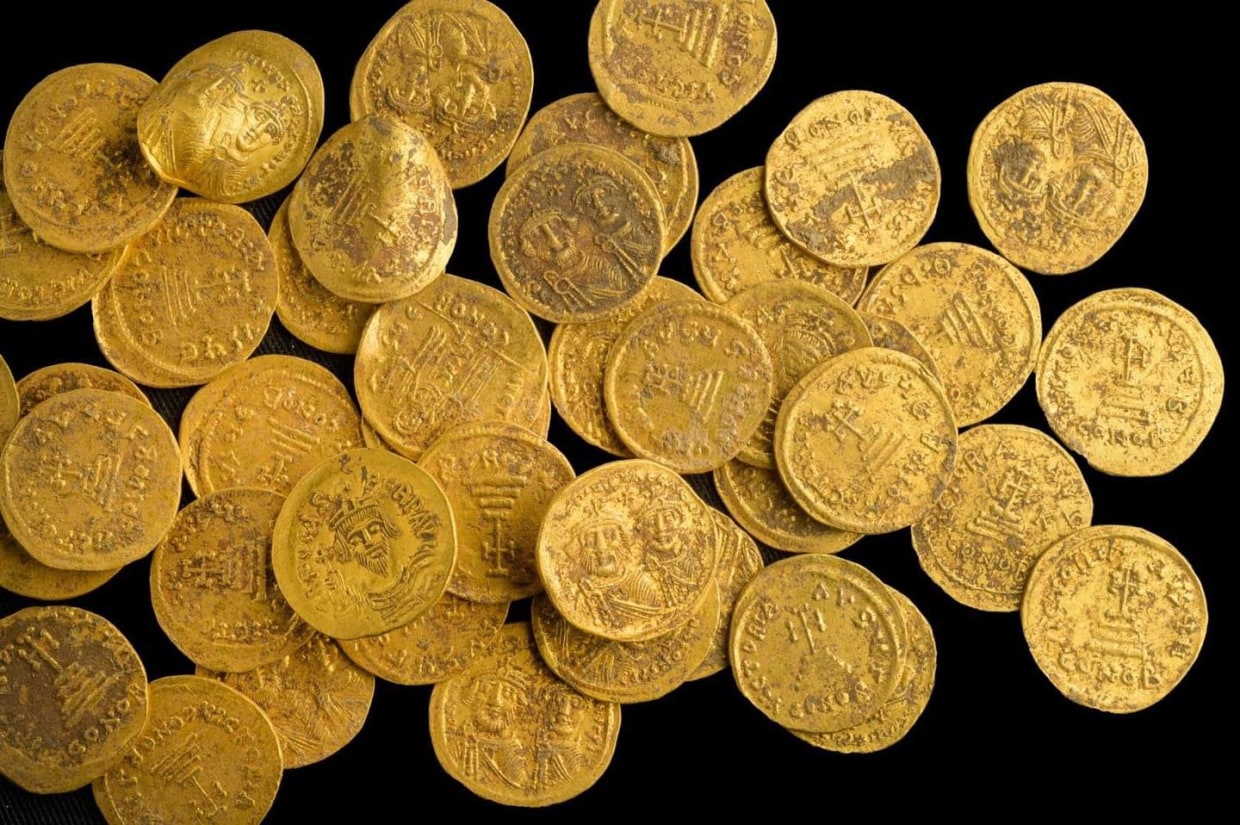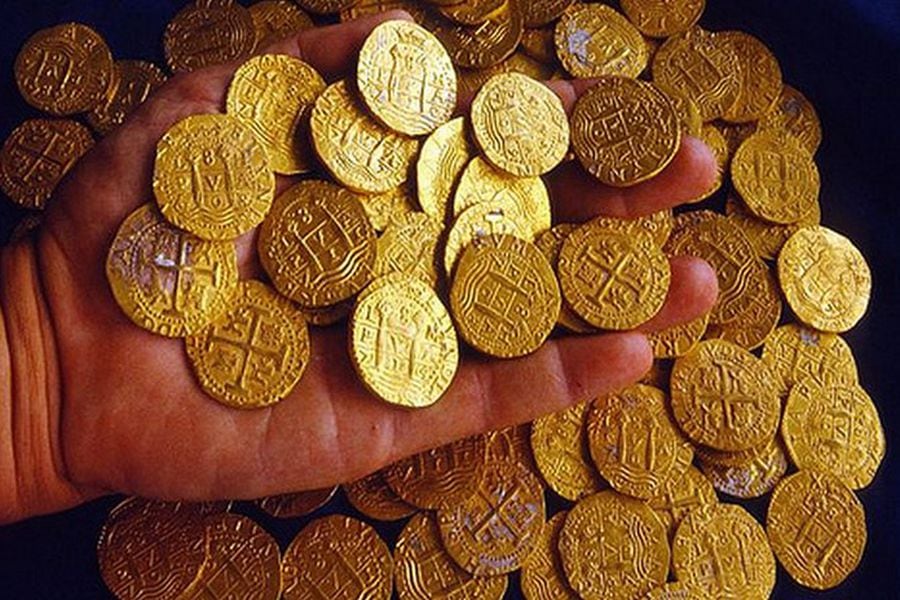Stories about “treasures” buried in secret places often arouse public curiosity. However, they are rarely true, but are usually just made up stories.
However, recently, archaeologists in Israel found a “treasure” of many pure gold coins, weighing about 170 grams, with images of the emperors Phocas (602-610 AD) and Heraclius (610-644 AD). . C.).
Experts believe they were hidden during the Muslim conquest of the area around the year 635. The gold coins were found in the Hermon Stream nature reserve in northern Israel, where ancient Banias and a place of worship were once located. to the god Pan, the half-man, half-goat god who symbolizes fertility.

Israeli archaeologists have found 44 pure gold coins dating back to the Byzantine period, hidden in a wall in a nature reserve. Photo: Israel Antiquities Authority.
Archaeologists are known to hypothesize that someone who lived during this period buried these coins while fleeing Muslim invaders, hoping to one day return.
Yoav Lerer, director of the excavation, said: “The discovery reflects a special moment, when the owner of the treasure was trying to hide his wealth when the war was about to break out, hoping to return one day.”
The coins also reveal new details about the economy during the last 40 years of the Byzantine dynasty in the region. The Byzantine Empire, centered in Istanbul, was a continuation of the Roman Empire after its fall in the West following the sack of Rome by barbarian tribes in 410 AD. The Eastern Empire would last another 1,000 years, but lost some of its provinces to conquests. Muslims in the 7th century, around the time when coins were buried in the walls.

“The majority of the coins belong to the Byzantine emperor Heraclius,” Gabriela Bijovsky, an expert on ancient coins, shared with the media. “What is especially interesting is that during his first years as emperor only his portrait was depicted on the coins, while shortly afterwards images of his children also appeared,” Bijovsky said.

Experts estimate that the coins were hidden during the Muslim conquest of the region in 635. Photo: Israel Antiquities Authority
Remains of pottery kilns, buildings, water channels and other coins were also found. At that time, Banias played an important spiritual role in several cultures. The site reached its peak in the early Roman period under Herod and his son Philip II, who renamed it Caesarea in honor of the Roman emperor Caesar Augustus.
According to Christian tradition, this is where Saint Peter declared Jesus the son of God before receiving the keys to the kingdom of heaven.
Banias is located in the area known as the Golan Heights, which Israel captured from Syria in the 1967 Six-Day War and later annexed, fueling settlements and a thriving tourism industry. Former President Donald Trump recognized Israeli sovereignty over the area in 2019, sparking strong protests from Damascus, but the rest of the international community considers the territory occupied by Israel.





